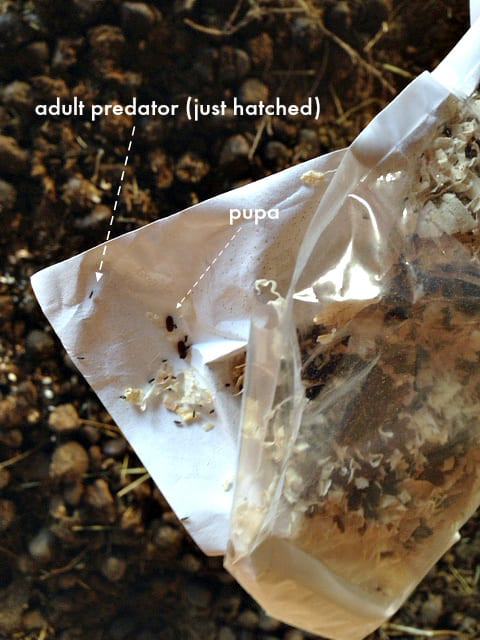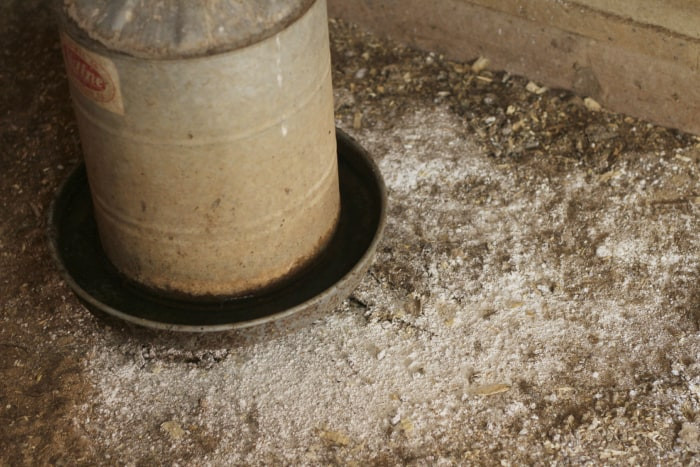Dealing with flies in a chicken coop can be incredibly frustrating. During warmer months, these buzzing pests can quickly multiply, creating unsanitary conditions and a general nuisance for both you and your flock. If you’re searching for natural ways to manage flies, you might have stumbled upon a common question: Does Cinnamon Keep Flies Away?
While cinnamon isn’t typically the first solution that comes to mind for fly control, it’s worth exploring natural alternatives to harsh chemicals. This article delves into whether cinnamon is an effective fly repellent and, more importantly, provides a comprehensive guide to natural fly control strategies for your chicken coop, ensuring a healthier and more pleasant environment for everyone.
Does Cinnamon Repel Flies? Exploring Natural Fly Repellents
The idea of using cinnamon to repel flies stems from its strong scent and the general belief that certain spices and herbs can deter insects. Cinnamon contains compounds like cinnamaldehyde, which is responsible for its distinctive aroma. This compound is known to have insect-repelling properties against some pests.
However, when it comes to flies, particularly common house flies or those found in chicken coops, the evidence for cinnamon’s effectiveness as a primary repellent is limited. While the strong smell of cinnamon might be unpleasant to flies and could offer some minor, localized deterrent effect, it’s unlikely to provide significant or long-lasting fly control on its own, especially in an environment as attractive to flies as a chicken coop.
Think of it this way: while a sprinkle of cinnamon might make a small area less appealing to flies temporarily, it won’t address the root causes of fly infestation in a coop, such as manure, spilled feed, and moisture. Therefore, relying solely on cinnamon to keep flies away is not a practical or comprehensive solution.
Instead of focusing solely on cinnamon, a more effective approach is to consider it as one element within a broader strategy of natural fly control. Many other natural methods are proven to be more impactful, and combining them offers the best chance of managing flies effectively in your chicken coop. Let’s explore some of these proven strategies.
6 Proven Natural Fly Control Strategies for Your Chicken Coop
While the direct fly-repelling power of cinnamon might be limited, incorporating it into broader herbal or essential oil strategies, as we’ll discuss, can still be beneficial. However, for robust fly control, these six strategies are far more effective:
1. Fly Predators: Nature’s Tiny Fly Fighters
One of the most ingenious natural methods is using fly predators. These are beneficial insects that prey on fly pupae, disrupting the fly life cycle without harming your chickens or the environment.
 Fly predators for natural fly control in chicken coops, showing a close-up of the small beneficial insects.
Fly predators for natural fly control in chicken coops, showing a close-up of the small beneficial insects.
How Fly Predators Work:
You can order fly predators online. They arrive as pupae in a small bag. After a few days, these tiny predators hatch and are released around your coop and manure piles. They actively seek out and destroy fly pupae, preventing them from maturing into adult flies. This biological control method is highly effective and sustainable. Since chickens might eat the pupae, try to release them in areas less accessible to your flock.
2. Diatomaceous Earth (DE): A Natural Drying Agent
Diatomaceous Earth (DE) is a versatile, naturally occurring powder made from fossilized algae. It’s a fantastic tool for natural pest control in various areas, including the chicken coop.
 Using diatomaceous earth (DE) in a chicken coop for fly control, showing DE being sprinkled in the coop bedding.
Using diatomaceous earth (DE) in a chicken coop for fly control, showing DE being sprinkled in the coop bedding.
How to Use Diatomaceous Earth in the Chicken Coop for Fly Control:
Sprinkle food-grade DE in coop bedding, dust bathing areas, and around the coop perimeter. DE works mechanically; its microscopic sharp edges dehydrate insects and larvae, making the environment less hospitable for them. It’s not a quick fix but a valuable component of a comprehensive fly prevention plan.
Important DE Precautions:
- Use Food-Grade DE: Ensure you purchase food-grade diatomaceous earth, safe for use around animals.
- Wear a Mask: DE is a fine powder and can irritate the lungs. Wear a mask during application.
- Ventilate the Coop: Allow dust to settle before letting chickens back in to minimize respiratory irritation for them.
3. Water Bags with Pennies: A Visual Deterrent?
This method is often considered an old wives’ tale, but it’s incredibly simple and inexpensive to try. The idea is that flies are repelled by the reflection of light off the water and the pennies.
How to Use Water Bags for Fly Control:
- Fill a gallon-sized Ziploc freezer bag halfway with water.
- Add 1-2 pennies to the bag.
- Hang the bag near coop entrances and doorways.
While the scientific evidence is debatable, some people swear by this method. Given the minimal cost and effort, it’s worth experimenting with to see if it provides any localized fly reduction in your coop.
4. Herbal and Essential Oil Sprays: Natural Repellents with Cinnamon Potential
Many herbs and essential oils possess natural insect-repelling properties. Creating sprays with these ingredients can make your chicken coop less attractive to flies and, this is where cinnamon can play a supporting role.
 Herbal fly repellent spray ingredients for chicken coops, showcasing various herbs and essential oils alongside a spray bottle.
Herbal fly repellent spray ingredients for chicken coops, showcasing various herbs and essential oils alongside a spray bottle.
Effective Essential Oils for Fly Repelling:
Rosemary, basil, dill, peppermint, spearmint, lavender, thyme, geranium, lemongrass, citronella, lemon, wild orange, and cinnamon oil.
Effective Herbs for Fly Repelling:
Rosemary, mint, basil, dill, lavender, thyme, bay leaves, tansy, and cinnamon sticks.
DIY Chicken Coop Fly Repellent Spray Recipe (Including Cinnamon):
- 2 cups vinegar
- 2 cups water
- 2 tablespoons vanilla extract
- 40 drops essential oils (combine oils like peppermint, lavender, and cinnamon oil) or use a strong cinnamon infusion instead of oil.
Mix ingredients in a spray bottle, shake well, and spray generously in areas where flies congregate, especially around doorways and windows.
Other Ways to Use Herbs and Cinnamon:
- Hang bunches of fresh herbs and cinnamon sticks around the coop.
- Place fresh or dried herbs and cinnamon sticks in nesting boxes.
- Mix dried herbs and cinnamon into nesting box bedding.
- Plant an herb garden near the coop (consider chicken-proof fencing for the herbs!).
Remember, herbal and essential oil sprays are not miracle cures, but they are valuable components of a natural fly control program, especially when combined with cleanliness.
5. Maintain Impeccable Coop Cleanliness: The Foundation of Fly Control
Cleanliness is paramount for effective fly control. Flies are attracted to decaying organic matter, especially manure, spilled feed, and moisture. Removing these attractants is the most impactful step you can take.
Key Cleanliness Practices:
- Frequent Manure Removal: Clean out coop bedding and droppings frequently, especially under roosts and perches, where manure accumulates most.
- Fresh Bedding: Add fresh bedding regularly to reduce odors and absorb moisture. Turn over existing bedding to keep it dry.
- Minimize Spilled Feed: Feed chickens outdoors or in feeders that minimize spillage. Clean up any spilled feed promptly.
- Outdoor Feeding in Summer: Feed kitchen scraps and treats outside the coop during fly season to avoid attracting flies indoors.
- Dry Coop Environment: Ensure proper coop ventilation to keep the environment dry, as flies thrive in moist conditions.
6. Fly Traps and Fly Strips: Direct Fly Capture
For immediate fly reduction, fly traps and fly strips can be very helpful. They physically capture and eliminate adult flies, complementing the other preventative strategies.
 Fly traps and fly strips for chicken coop fly control, showing both sticky fly strips and a bottle trap with dead flies.
Fly traps and fly strips for chicken coop fly control, showing both sticky fly strips and a bottle trap with dead flies.
Using Fly Traps and Strips Effectively:
- Fly Strips: Simple, inexpensive, and effective for catching flies. Hang them in areas with high fly traffic. Be prepared to replace them regularly as they fill up.
- Fly Traps: Reusable traps that use bait to lure and trap flies. You can purchase commercial traps or make DIY versions from plastic bottles. Place traps strategically around the coop perimeter and away from chicken feeding areas.
Conclusion: A Multi-faceted Approach to Fly Control, Cinnamon as a Complement
While cinnamon alone isn’t a magic bullet for fly control, understanding does cinnamon keep flies away reveals that it can be a helpful addition to a broader natural fly control strategy, particularly within herbal sprays and as a coop scent enhancer.
The most effective approach to managing flies in your chicken coop is multi-faceted. By combining strategies like fly predators, diatomaceous earth, cleanliness, herbal repellents (including cinnamon), and fly traps, you can significantly reduce fly populations naturally and create a healthier, more pleasant environment for your chickens and yourself. Remember, consistent effort and a combination of these methods will yield the best and most sustainable results in your battle against coop flies.